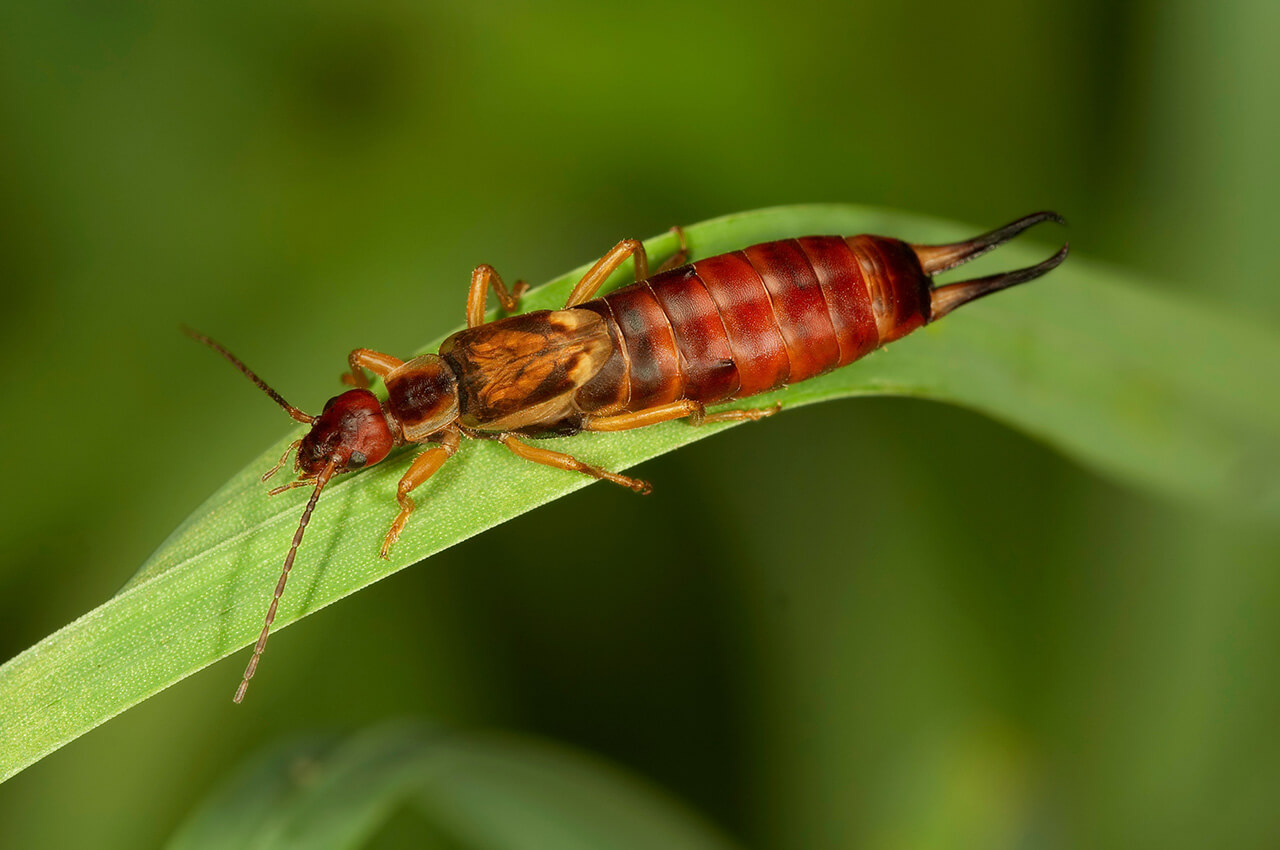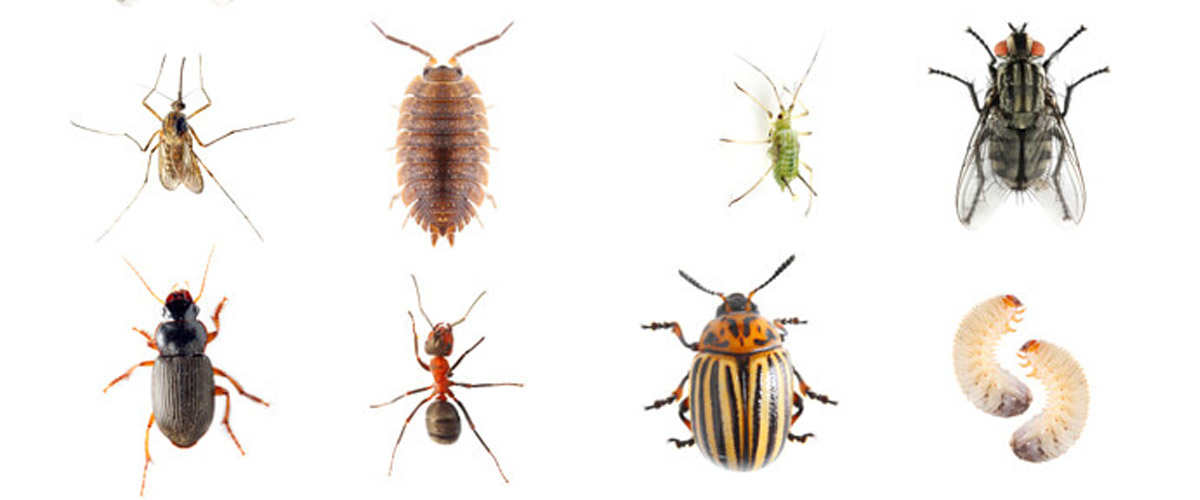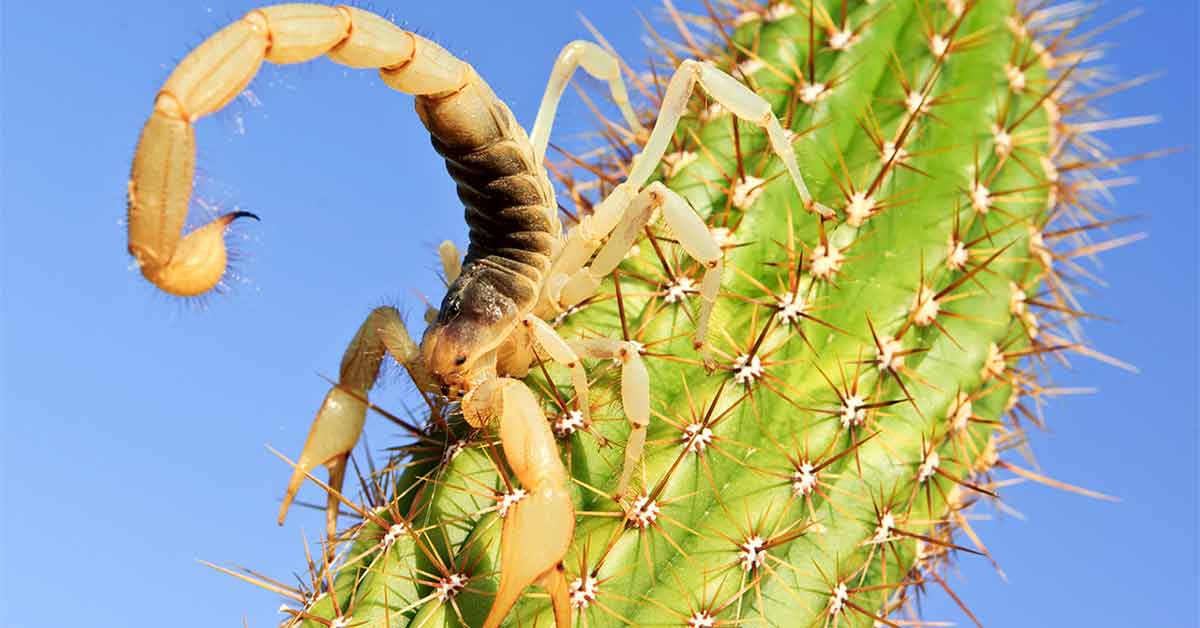Common Summer Pests of the Pacific Northwest
Summer months bring fun, sun … and summer pests. During warm days and nights, small and very hungry critters can do a great deal of damage to your garden plants. Read on to learn more about the most common pests of the Pacific Northwest and how to control them in your yard, so you can get back to the more enjoyable activities that the warm season has to offer.*
In the often wet climate of the Pacific Northwest, moisture-loving insects abound. The following pests feast on tender foliage and vegetables during the summer months.
EARWIG:
This 3/4-inch, slender, reddish-brown insect has a tail that looks like it could pinch, but this insect doesn't harm humans.1 The earwig is a sneaky, hard to detect pest that wreaks havoc in the garden at night, chewing on the tender leaves of a wide variety of plants, including flowers, greens, vegetable seedlings and soft fruit, such as strawberries. This nocturnal insect is attracted to moist, dark places.
- Designation: nuisance and harmful
- Remedy: To control earwigs, start by encouraging this pest's natural predators in the garden, including toads and birds. You can also trap earwigs at night by placing sheets of newspaper in your planting beds. The bugs will hide beneath the sheets, and all you have to do is scoop them up in the morning and drown them in soapy water.
PILLBUG:
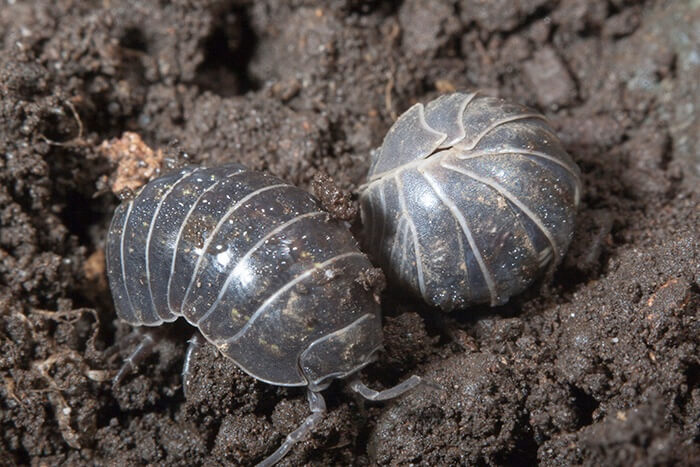
Also known as the roly-poly bug, the pillbug is most active at night. This gray or brown creature may have "bug" in its name, but it isn't an insect at all. With body segments resembling armored plates, the pillbug is related to lobsters and crabs, and it's the only crustacean adapted to spend its life out of water. Though terrestrial, it stays in damp environments and breathes through gills.2 This pest, a cousin of the sowbug, is technically a decomposer that eats dead plant material, but it can also be guilty of enjoying summer feasts of garden seedlings and soft fruits and vegetables.
- Designation: nuisance
- Remedy: Reduce or eliminate moist piles of leaves, wood and organic debris. Protect fruit and vegetable plants by growing them in above-ground containers or pots. For in-ground gardens, cover the soil surrounding plants with black plastic. The plastic will get too hot in the summer for pillbugs to walk on. Like earwigs, these pests can also be trapped under newspapers at night. In the morning, just scoop them up and drown them in soapy water. For quick control, apply Amdro Quick Kill Ant & Spider Killer, which kills up to 100 listed insects and spiders, then keeps on working for up to three months.
BLACK VINE WEEVIL:
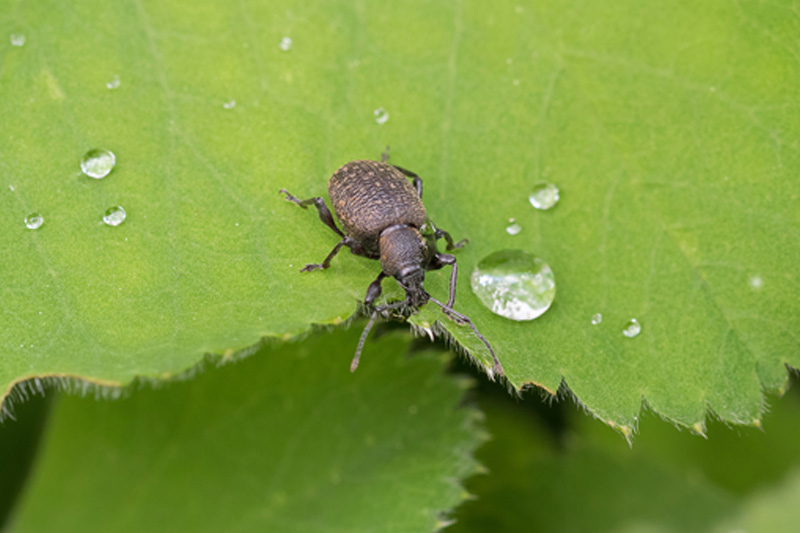
As an adult, this hard-shelled beetle is 1/2 inch long, brown or black in color, and has a long snout that curves downward.3 The black vine weevil usually comes out at night to feed on a wide variety of garden plants, although it prefers feasting on rhododendrons, azaleas, euonymus, hemlocks and yews. In the larval (grub) stage, the black vine weevil eats plant roots, making this pest double trouble. Extensive feeding by the weevil in either form can kill plants.
- Designation: nuisance and harmful
- Remedy: Decrease the amount of moisture in your soil. Excess moisture can cause weevil larvae to congregate in the top few inches of soil, where they do a great deal of root damage, as many plants have their feeder roots in the first 8 to 12 inches of soil. Search for adult weevils on plants in late spring/early summer, hand remove and kill them.
* For a quick remedy for all these listed pests, treat with the wide-reaching Amdro Quick Kill Insect Killer for Lawn & Landscape Ready To Spray.
Amdro Quick Kill is a registered trademark of Central Garden & Pet Company.
Resources:
1. Carol Savonen, "Earwigs Abound in Wet Gardens," Oregon State University Extension Service, August 1, 2006.
2. Tim Gibb, "Sowbugs and Pillbugs and Rolly Pollies," Purdue Extension, April 25, 2006.
3. "Grape-Black vine weevil," Pacific Northwest Insect Management Handbook, 2015.

